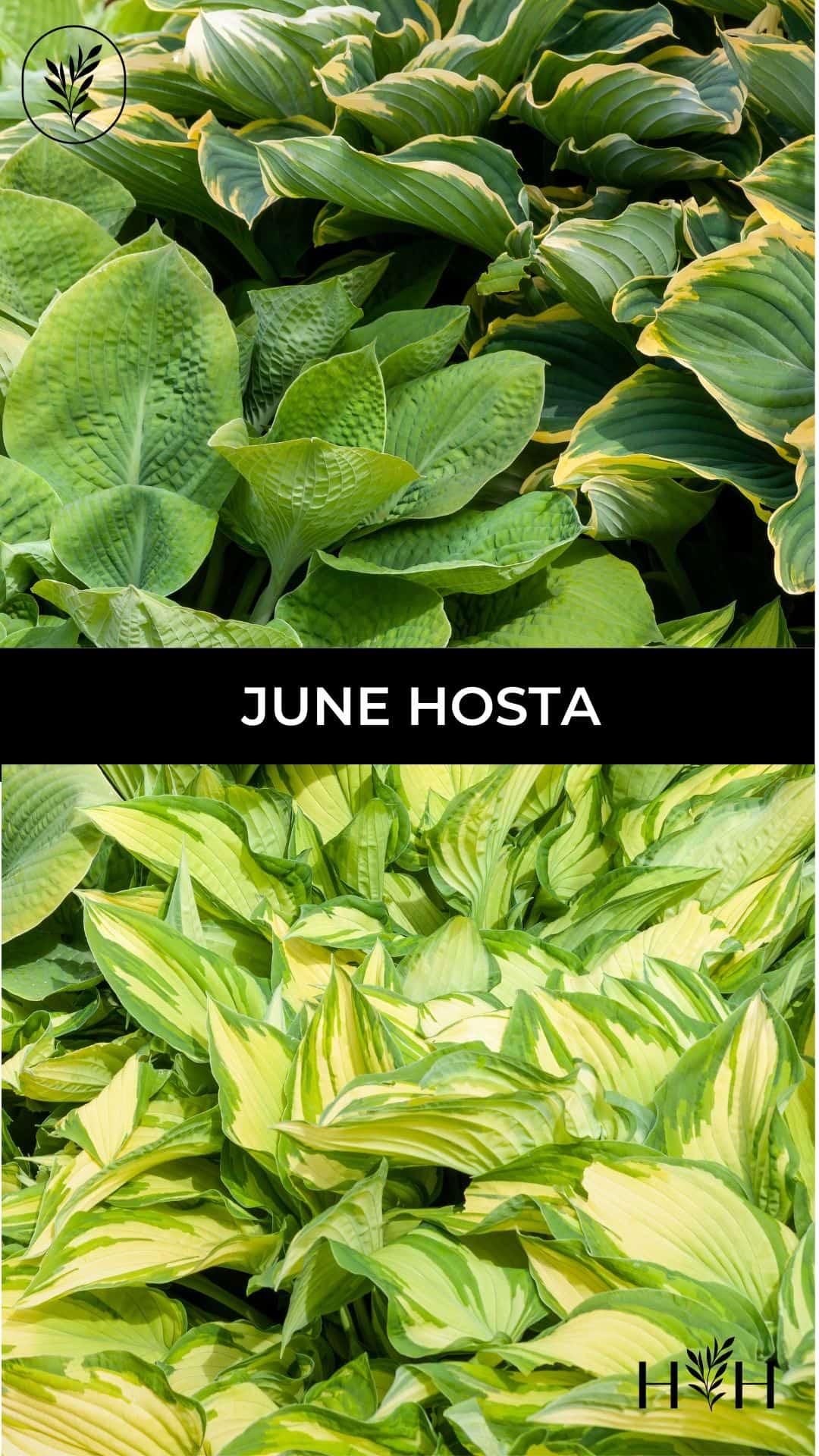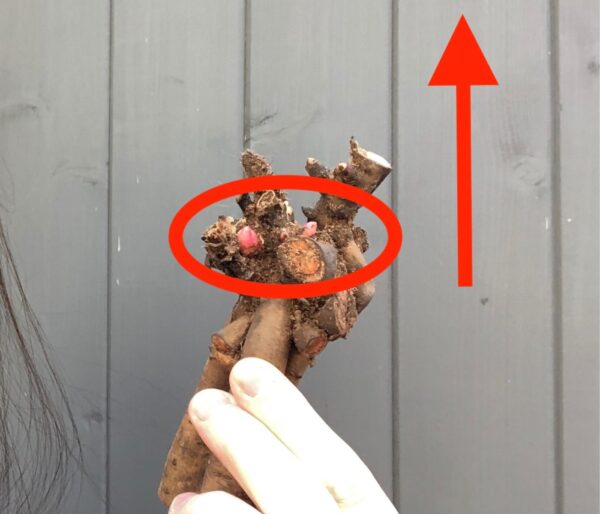June hosta is a medium-sized hosta variety known for its mound of chartreuse gold leaves with variegated blue edges. These plants grow about 3 feet wide and 16″ high, with a 22″ tall flower stalk in midsummer.
The leaves are thick and somewhat slug-resistant, lasting well into autumn. The flowers of June hosta are bell-shaped and creamy lilac white in color. June hosta is hardy in zones 3-9 and can be grown in partial shade or partial sun.
June hosta basics
Hosta ‘June’ is a popular variegated hosta cultivar with blue-green-yellow leaves and white flowers. The wide leaves have a bright chartreuse yellow center, transitioning to lime green and dark blue at the edges. ‘June’ is one of the most colorful and sought-after hosta cultivars in garden centers.
June hostas are medium-sized, growing to create a mound of overlapping leaves about 3 feet wide and usually about 14″-18″ tall. This variety is popular in gardens as a low-growing, shade-tolerant herbaceous perennial.
NEO Plants introduced June hostas in 1991 as a tissue-cultured sport of Halcyon hosta. Both June and Halcyon are Tardiana group hostas, first developed by Eric Smith (Dorset, UK) as a cross of Hosta ‘Tardiflora’ and Hosta sieboldiana ‘Elegans’. Tardiana group hostas tend to grow more quickly than most other varieties and are generally extremely easy to grow. Hosta ‘June’ was named the 2001 Hosta of the Year by the American Hosta Growers Association and was given an RHS Award of Garden Merit in 2004.
June hosta leaves
June hosta leaves are medium-sized wide, thick leaves with irregular blue-green margins and streaked chartreuse yellow centers. These blue-green leaves on mature plants are usually about 6″ long and 4″ wide. They have a matte texture, particularly in spring. The edges of the leaves are flat, and curl inwards at the base of the leaf stem, creating a pinched heart shape.
June hosta flowers
Just hosta flowers are a very pale purple shade. The soft lilac color is brightest in the bud and fades as the flowers bloom at the top of the flower spikes. The pale lavender flowers are bell-shaped and grow very densely on the flower stalks just above the leaves of the plant. The flowers can be left on the plant to bloom or brought indoors as cut flower spikes.

Planting June hostas
June hostas are easy to plant. Planting hostas is relatively easy, and this variety is no exception.
When to plant June hostas
Hostas are best planted in spring or fall but can be planted any time the ground isn’t frozen, provided they are given ample water. They are very drought tolerant once they are established.
Where to plant June hostas
Hostas are typically known as shade plants; however, June hostas will do well in sunnier locations if given enough water. This variety is sun-tolerant and can be planted in direct morning sunlight as long as some shade is provided in the afternoon in hot climates.
Some direct sunlight helps to bring out the contrast in the variegation. Note that some shade gardens may receive sunlight early in the season if grown under deciduous trees that are late to leaf out. These colorful hostas are tolerant of dry shade once established.
Soil for June hostas
Hostas grow best in well-drained, rich soil. You can prepare less-than-perfect soil by working organic matter like compost into the soil prior to planting the hosta. Heavy clay soil can be improved by working in some sand (although this can be difficult!). While well-drained soil is great for hostas, the overly sandy ground should be improved by mixing in some organic matter like compost.
How to plant hostas
When planting, dig a hole that is twice the width of the pot but no deeper. Gently remove the plant from its container and loosen any tight roots. Place the plant in the hole so that the top of the root ball is level with the soil surface and backfill with amended soil. Water well to settle the roots. Mulch with organic material such as compost or hardwood mulch.
Care for June hostas
Hosta ‘June’ is an easy-to-grow variety that will thrive with minimal care in most garden conditions. These plants are known for their drought tolerance once they are established.
Watering June hostas
June hostas should be watered regularly during the first growing season to help them become established. After that, they are pretty tolerant of drought and can be allowed to dry out between watering. They benefit from deep watering about once a week during prolonged dry periods.
Fertilizing hostas
June hostas should be fertilized in spring with a slow-release fertilizer or organic compost. They don’t need to be fertilized every year but can benefit from a light application of fertilizer in the spring.
Pruning hostas
June hostas do not require significant pruning but can be cut back hard in winter to early spring if desired. This will help to keep the plant tidy and promote new growth in the spring. If slugs are a problem, cut the entire plant back in late fall after the last frost and remove all leaves and plant debris from the area.
During the growing season, remove any yellow or dead leaves and clear debris away from the base of the plant to deter pests from making it their home.
Propagating hostas
Hostas can be propagated by division in spring, late summer, or early fall. Dig up the entire plantain lily plant and divide it into smaller sections, making sure each section has at least one bud. Here is a detailed guide on how to divide hostas.
Similar hosta varieties to June hosta
Here are some hostas that are similar to the June hosta:
- Hosta ‘Grand Marquee’
- Hosta ‘Punky’
- Hosta ‘Touch of Class’
- Hosta ‘Paradigm’
- Hosta ‘Lady Guinevere’
- Hosta ‘Dream Queen’
- Hosta ‘Rootin Tootin’
- Hosta ‘Katherine Lewis’
- Hosta ‘Summer Serenade’
- Hosta ‘Paradise Joyce’










